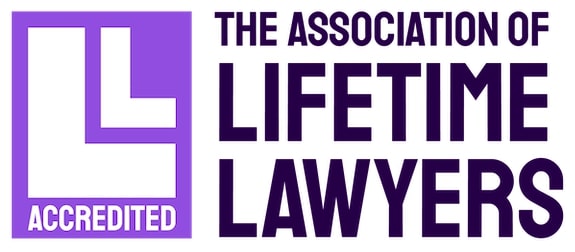What is a winding up petition?
A winding up petition is a formal legal action taken to close down (or “wind up”) a company that is unable to pay its debts. It is a critical tool for creditors who are seeking to recover debts of £750 or more from companies that haven’t paid despite multiple payment requests. Essentially, the winding up order asks the court to liquidate the company, and if the court agrees, it will appoint someone to liquidate the company’s assets and pay creditors.
However, the court’s role is not merely administrative; it exercises significant discretion at multiple stages of the process, guided by established case law, statutory provisions, and the overarching principles of fairness and commercial reality. This article examines the court’s discretion in dismissing, staying, and rescinding winding up orders, with a focus on the statutory framework, practical considerations, and recent developments.
Statutory framework for winding up petitions
Under the Insolvency Act 1986, a creditor may petition the court to wind up a company on specific grounds. The most relevant provisions for creditors are:
- Section 122(1)(f) and Section 123 of the Insolvency Act 1986: The company is unable to pay its debts, as determined by either:
- The cash flow test (failure to pay debts when due)
- The balance sheet test
In practice, many creditors will serve written notice of a debt on the debtor company in the form of a Statutory Demand. As long as the Demand is for a sum exceeding £750 (the statutory minimum), if the debt remains unpaid for 21 days, a winding up petition can be presented in court.
The court retains the discretion to refuse a winding up order even if a debt remains unpaid. This discretion must be used fairly and in line with established principles, particularly where (i) the debt is disputed on substantial grounds, requiring proper determination through litigation, (ii) the company is demonstrably solvent and capable of paying its debts as they fall due, or (iii) there are viable prospects for restructuring supported by credible evidence and a clear implementation timeline.
Disputed debts and the court’s discretion to dismiss petitions
The court will generally dismiss a winding up petition if the debt is genuinely disputed on substantial grounds. Key principles include:
- Winding up proceedings are not suitable for resolving complex disputes over liability (Re Bayoil SA [1999]).
- The court will dismiss the petition if the dispute can be resolved through ordinary litigation or arbitration.
Creditors must ensure that their claims are clear and undisputed before commencing winding up proceedings.
Balancing creditor interests
The court weighs the interests of the petitioning creditor against:
- The rights of opposing creditors (e.g., secured creditors or those supporting restructuring).
- The potential for business rescue where the company is viable but temporarily illiquid.
Recent case law reflects the court’s preference for preserving value through restructuring over immediate liquidation.
Moratoriums and restructuring
The Corporate Insolvency and Governance Act 2020 (CIGA) introduced moratoriums to provide eligible companies with an initial 20 business day breathing space (subject to extension by the directors for a further 20 business days, or with the consent of the creditors, for up to one year) to pursue restructuring. During that time, no legal action can be taken against the company without court permission. The court may:
- Grant a moratorium to halt creditor action while a rescue plan is developed.
- Dismiss or adjourn a winding up petition if restructuring prospects are credible.
This aligns with the modern emphasis on business rescue in insolvency law.
Staying a winding up order
(Under Section 147(1) of the Insolvency Act 1986)
The court has the power to stay (pause) winding up proceedings under Section 147(1). This is often used where:
- Debt Settlement: The debt underlying the petition has been paid, compromised, or secured, with the court distinguishing between pre- and post-petition payments. Post-petition payments require careful scrutiny to ensure they do not prejudice the interests of other creditors.
- Restructuring or Rescue: The company proposes a viable restructuring plan (including a scheme of arrangement under Part 26A of the Companies Act 2006, a Company Voluntary Arrangement (CVA), or if the company demonstrates other credible rescue prospects.)
- Public Interest: A stay would prevent disproportionate harm to employees, suppliers, or other stakeholders.
- Litigation or Arbitration: The debt is subject to ongoing litigation or arbitration, and a stay allows the dispute to be resolved.
Practical considerations:
- The company must act promptly to evidence changed circumstances.
- The court will exercise its discretion to determine whether a stay serves the interests of creditors as a whole, considering both the positions of secured and unsecured creditors, the likelihood of improved outcomes through alternative procedures, and the preservation of business value.
For example, in cases where a company has secured new funding or demonstrated a credible repayment plan, the court has been willing to grant a stay, allowing the company to continue trading.
Rescinding a Winding up Order
(Under Paragraph 9.10 of the Practice Direction on Insolvency Proceedings)
The court may exercise its discretion to rescind (set aside) a winding up order under Paragraph 9.10 of the Practice Direction. This discretion must be exercised cautiously and only in exceptional circumstances. While the Practice Direction does not specify grounds for rescission, case law has established clear principles guiding the court’s discretion:
- Payment or Settlement: The debt underlying the petition has been paid or settled after the order was made; however, the court will carefully scrutinise post-order payments to ensure they don’t unfairly prejudice other creditors.
- Material Change in Circumstances: The company’s financial position has improved significantly, such as through new investment or a restructuring plan.
- Procedural Irregularity: The order was made in error (e.g., defective service of the petition or failure to notify key parties).
- Public Interest: Rescission avoids disproportionate harm to employees, suppliers, or other stakeholders.
Key requirements:
- The application must be made promptly, typically within five business days of the winding up order being made.
- Full disclosure of all relevant facts is required.
- The court will consider the impact on creditors and whether rescission unfairly prejudices any party.
For example, in cases where a company has demonstrated that the debt has been settled and that rescission would not harm creditors, the court has been willing to rescind the winding up order.
Practical guidance for creditors and companies
For Creditors:
- Ensure debts exceed the statutory minimum (£750), are undisputed, and follow proper statutory demand procedures under Section 123(1)(a) of the Insolvency Act 1986 before petitioning. Written notice must be given, and the statutory waiting period must be observed.
- Be prepared to defend against challenges based on solvency or restructuring proposals.
For Companies:
- Seek legal advice immediately upon receiving a winding up petition.
- Consider options such as:
- Disputing the debt.
- Proposing a Company Voluntary Arrangement (CVA) or restructuring plan.
- Applying for a moratorium or seeking a stay/rescission of the order.
The court’s discretion in winding up proceedings, while bound by statutory framework and precedent, plays a vital role in ensuring fairness, flexibility, and the balanced protection of stakeholder interests in insolvency law. By carefully considering factors such as the validity of the debt, the interests of creditors, and the potential for restructuring, the court can achieve outcomes that serve the broader interests of justice. For both creditors and companies, understanding the court’s discretion in dismissing, staying, and rescinding winding up orders is essential to navigating this complex area.
Do you need legal advice in relation to winding up petitions?

Our expert Insolvency Solicitors have experience acting on a wide range of insolvency matters for businesses, individuals, lenders and creditors, and insolvency practitioners across the country. We are known for our good sense and plain speaking. We focus on solutions not problems.
At Scott Bailey, our solicitors are experienced in all types of work from small but important claims for individual clients through to multi-million pound commercial cases. Contact us today if you require advice and guidance.










